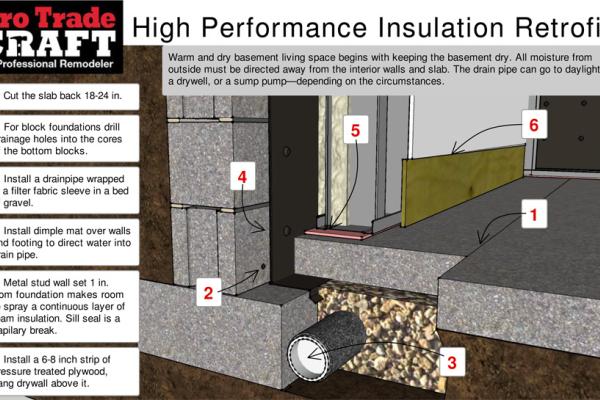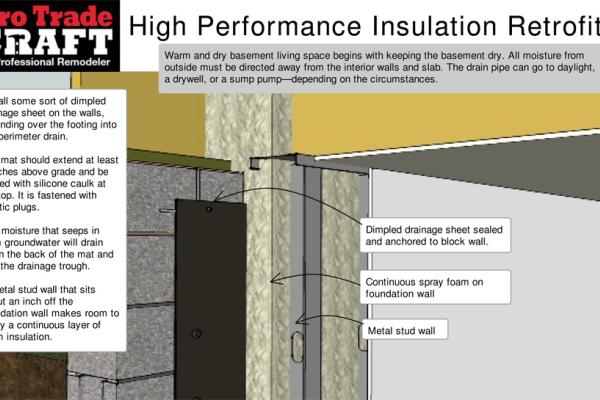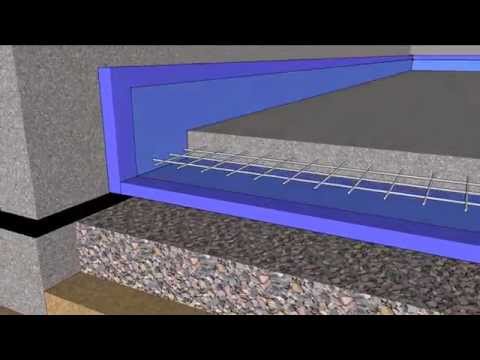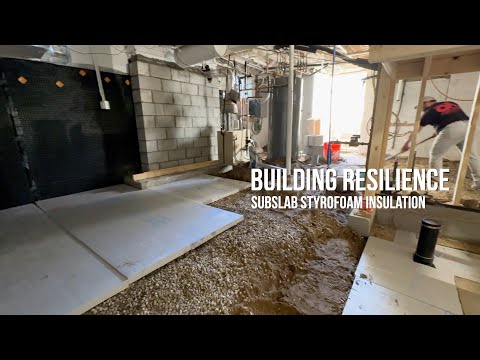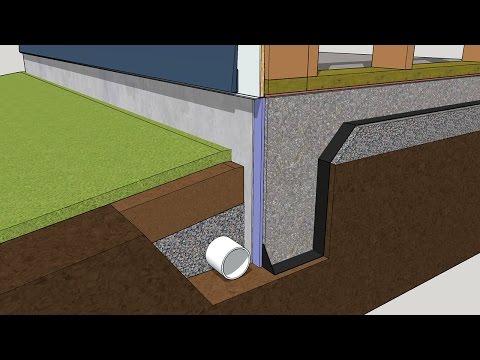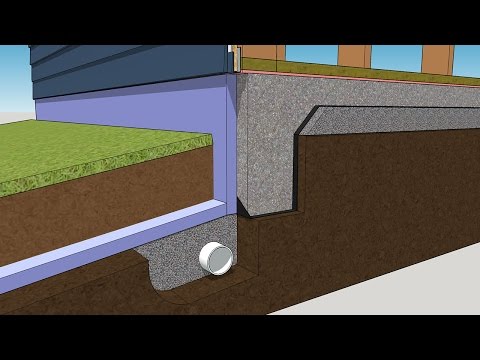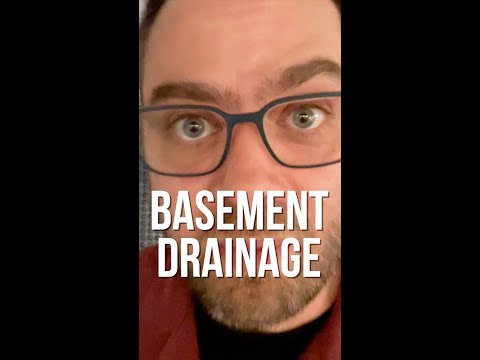Warm and dry basement living space begins with keeping the basement dry—duh. All moisture from outside must be directed away from the interior walls and slab.
All moisture from outside must be directed away from the interior walls and slab. The drain pipe can go to daylight, a drywell, or a sump pump—depending on the circumstances.
Step-by-step
- Cut the slab back about a foot and a half or two feet, dig out the dirt down to the bottom of the footing, but don’t go deeper, or disturb the ground that the footing is bearing on.
- Install a drainpipe wrapped in a filter fabric sleeve on a bed of gravel.
- If you have a block foundation it’s a good idea to drill drain holes into the cores on the bottom blocks, so moisture can drain into the new perimeter drain.
- Install some sort of dimpled drainage matt on the walls, and extending over the footing into the perimeter drain.
- The mat should extend at least 6 inches above grade and be sealed with silicone caulk at the top. If you live in a snowy area, where the foundation is routinely covered with snow, extend the drainage sheet up to the mudsill. It is fastened with plastic plugs.
Now, any moisture that seeps in from groundwater will drain down the back of the mat and into the drainage trough.
- Fill the trough with gravel and top with concrete.
- A strip of closed cell sill seal provides a capillary break as well as a thermal break for a metal stud wall that sits about an inch off the foundation wall. This air gap makes room to spray a continuous layer of foam insulation.
It also keeps the wiring channels clear for future updates.
- At the bottom of the wall install a 6 or 8 inch strip of pressure treated plywood in case of future water events and then hang drywall above it.
Dry basement living space begins with drainage, continuous insulation and a path to direct outside moisture back. out. side.
<code>
2012 IRC:
- SECTION R405 FOUNDATION DRAINAGE
- SECTION N1102 BUILDING THERMAL ENVELOPE
</code>
